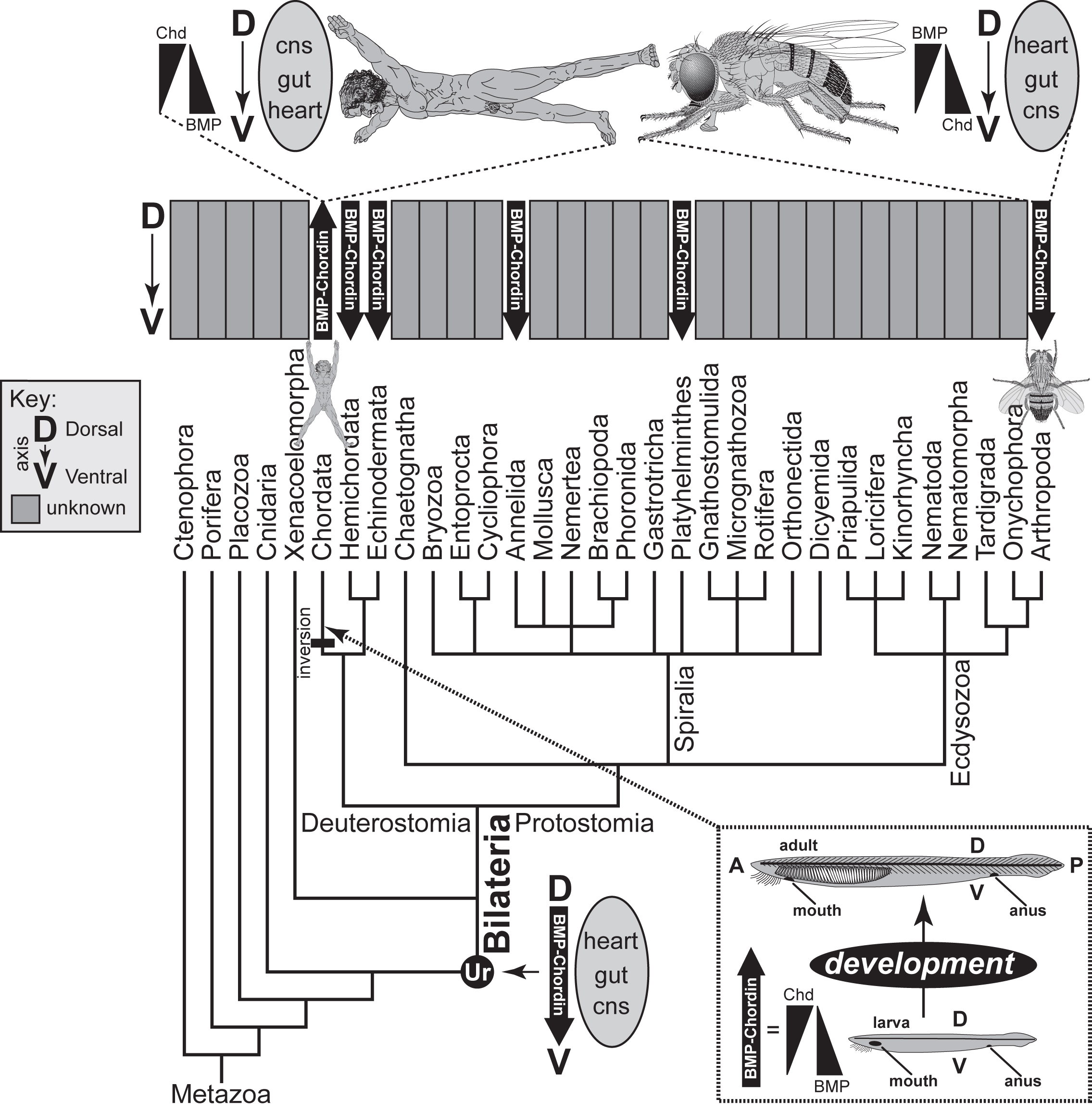

Deep Homology?
  |
Deep Homology? |
 Orientation of BMP-Chordin polarity along the D-V axis among animal phyla. Cellular positions along the D-V (dorsal-ventral) axis of bilaterian embryos are specified by a concentration gradient of the morphogen BMP (Bone Morphogenetic Protein = Dpp in flies), depicted as a solid triangle in schematics at the top. The BMP gradient is shaped by a reciprocal gradient (antiparallel triangle) of Chordin (Chd) or other antagonists. In the survey of phyla below, BMP-Chordin polarities are denoted by thick arrows from high BMP to high Chordin. In flies the BMP-Chordin vector matches the D-V vector, whereas in chordates the two vectors point in opposite directions. Why? An inversion seems to have occurred at a point just before the stage when amphioxus diverged from its fellow chordates (box at lower right). Flipping of the formerly dorsal (back) side to the ventral (belly) side presumably placed the mouth at an awkward angle for feeding. In amphioxus the mouth migrates from the left flank to a ventral site during metamorphosis -- suggesting that this species was "caught in the act" of adjusting its mouth location to suit its new posture. Because of this inversion the sequence of organs along the D-V axis in Chordata (central nervous system, gut, heart) is opposite to that in Arthropoda (heart, gut, cns) and other bilaterian phyla. |
|
Introduction: cover image Body axes: figure 2 | figure 3 | figure 4 | figure 5 | figure 6 Nervous system: figure 7 | figure 8 Vision: figure 9 | figure 10 | figure 11 | figure 12 | figure 13 Touch and hearing: figure 14 | figure 15 Smell and taste: figure 16 Limbs: figure 17 Epilogue: figure 18 The Interactive Fly resides on the web server of the Society for Developmental Biology. |